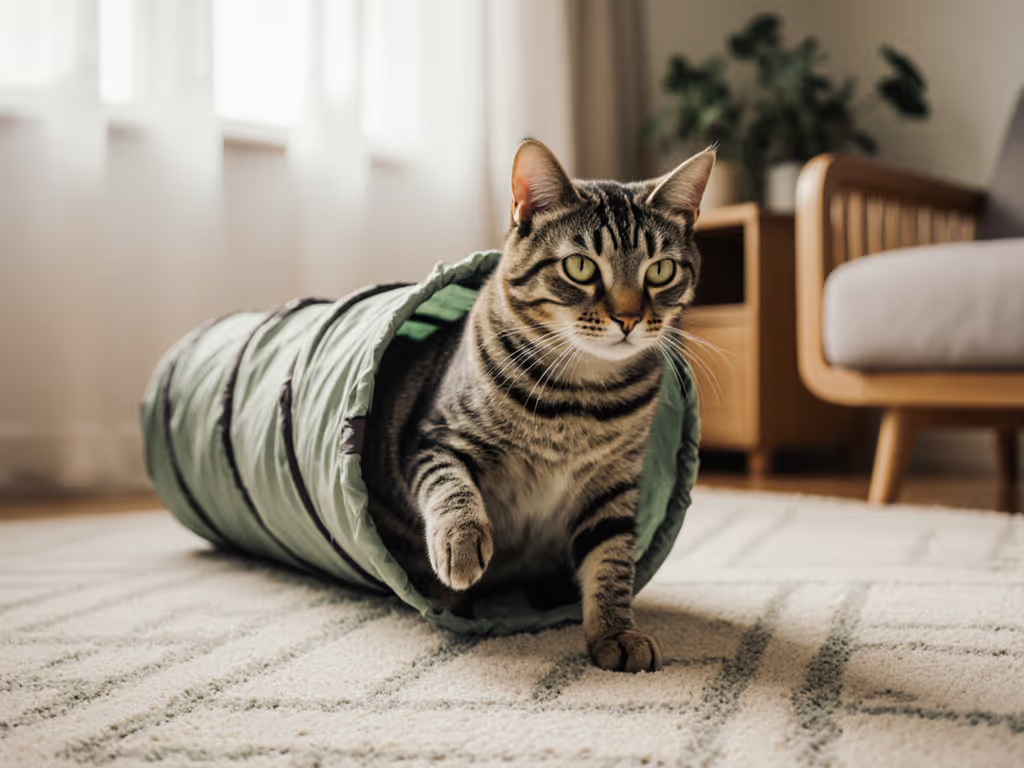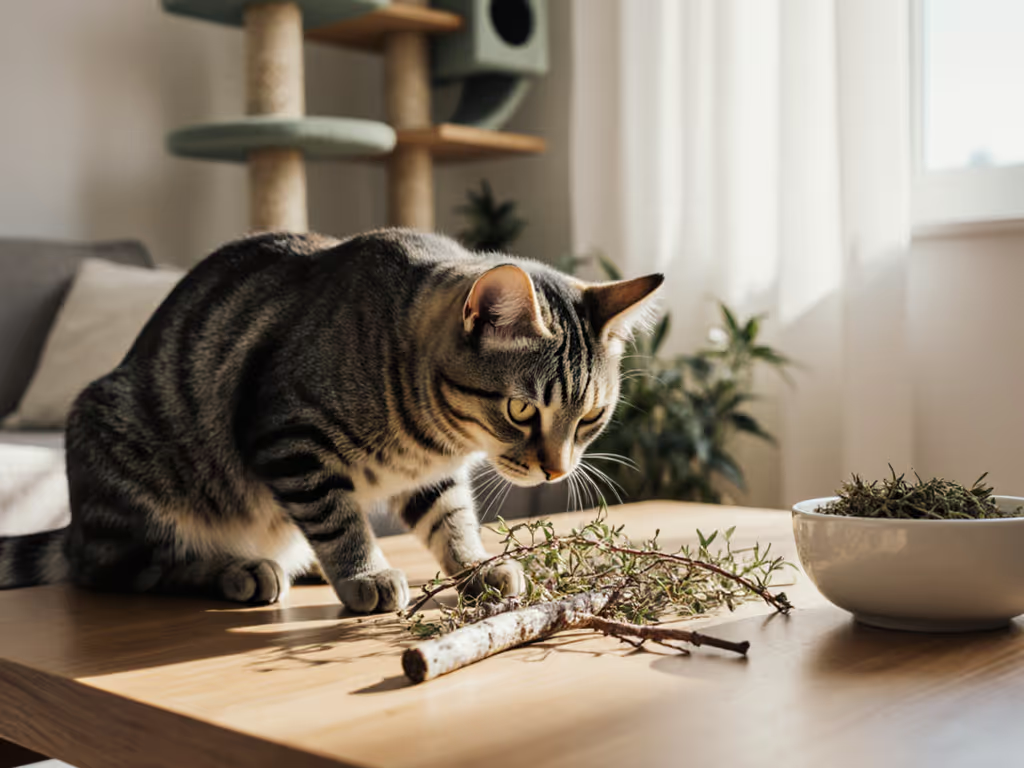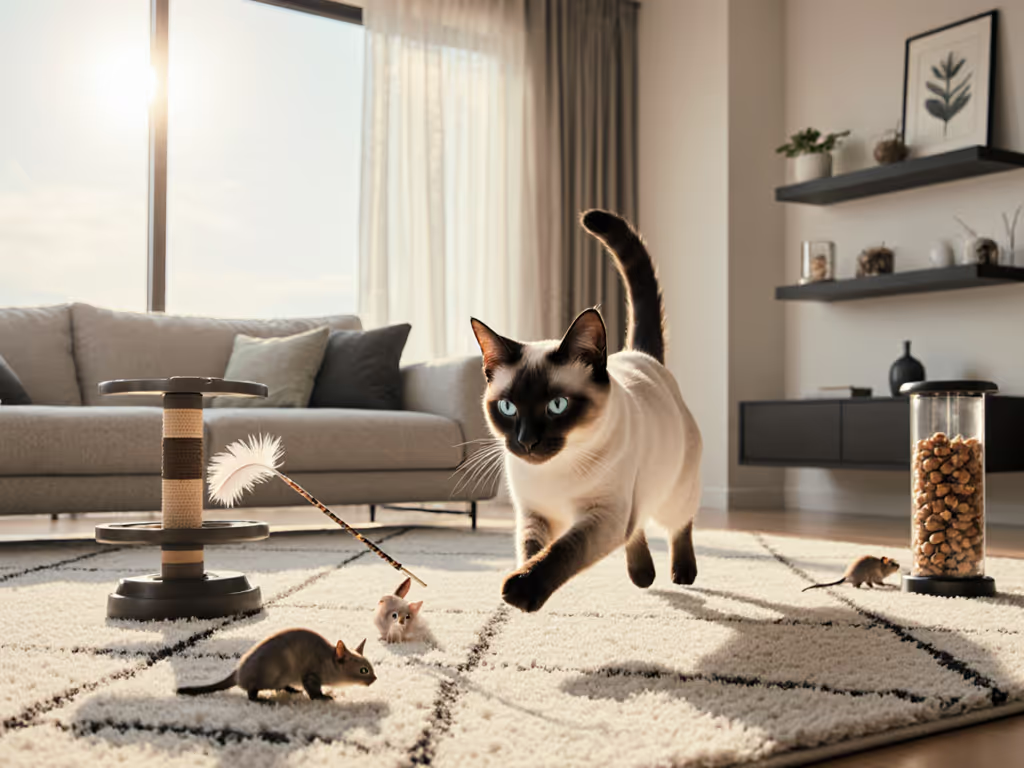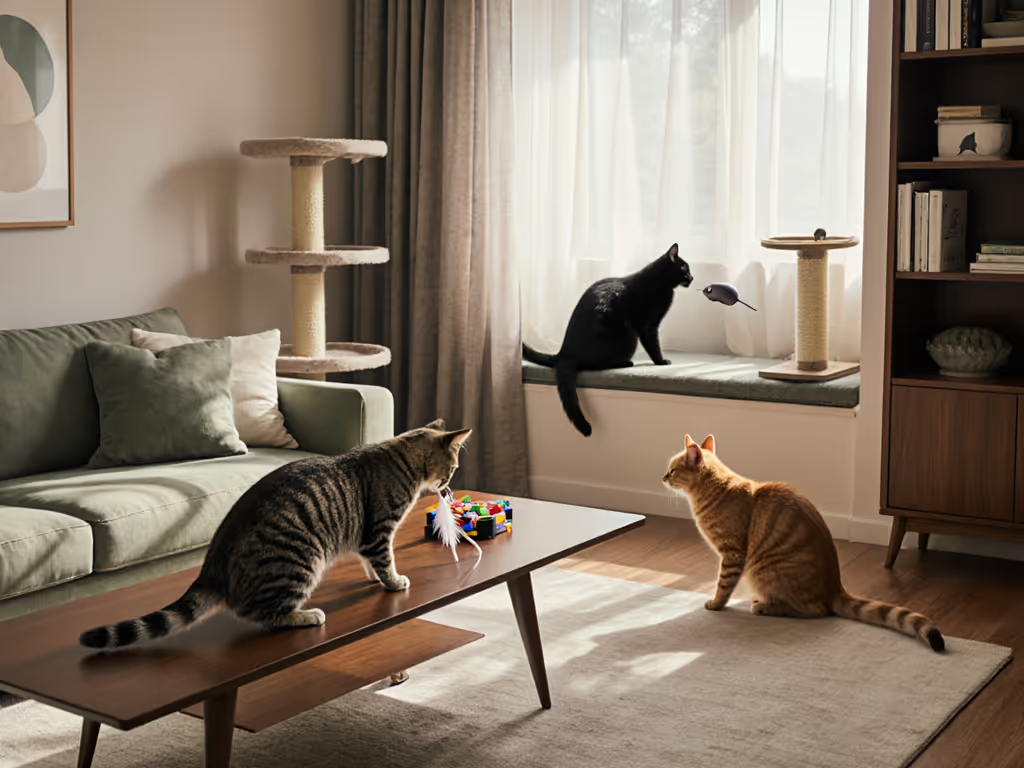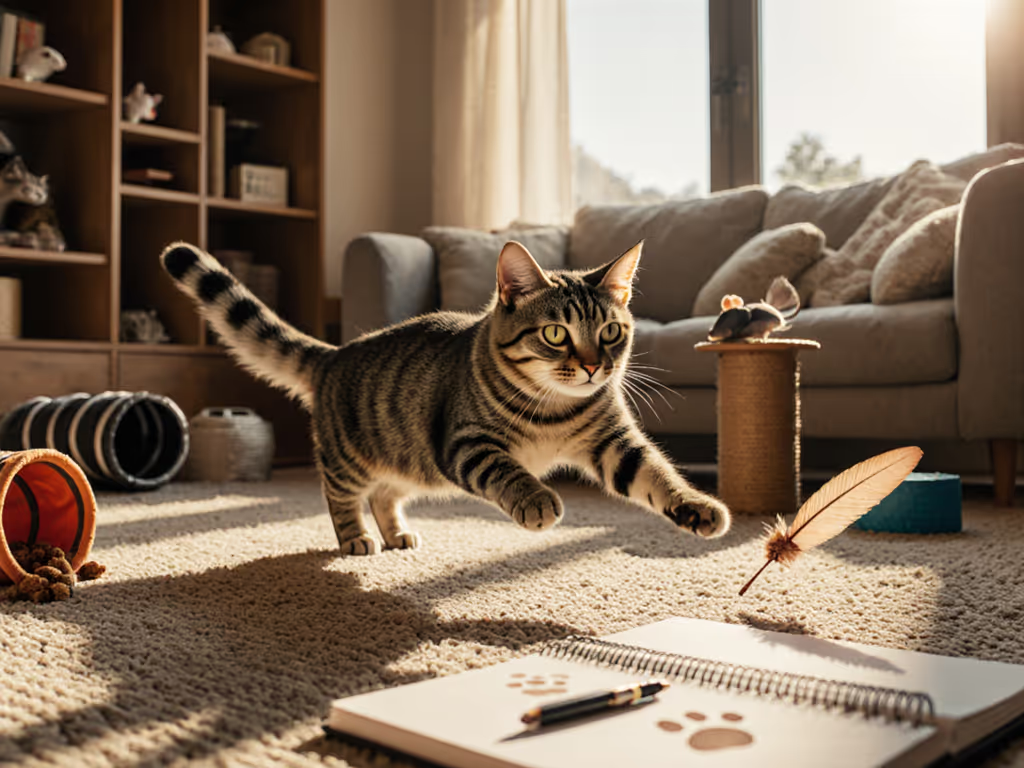
Best Interactive Cat Toys for Your Cat's Personality
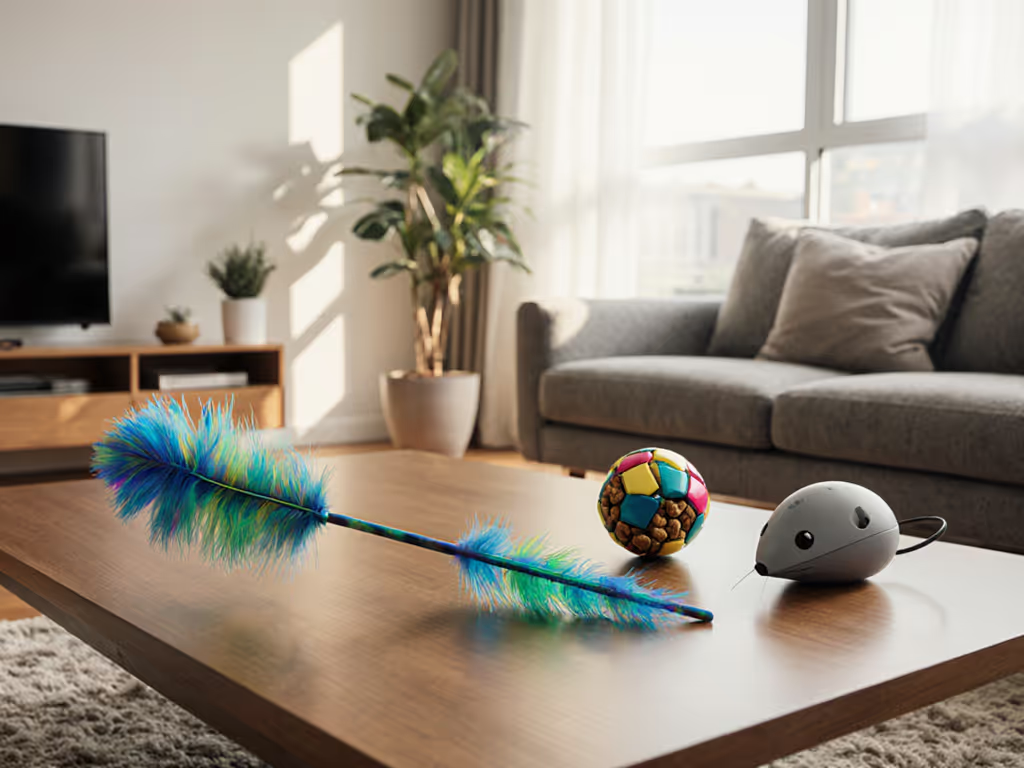
If you've bought interactive cat toys only to watch your cat ignore them (leaving you with cluttered corners and sunk-cost guilt), you're not failing. Most cats reject 70% of purchased toys within days, not because they're "picky," but because we mismatch their instinctual needs. As someone who transformed my studio apartment from a no-play zone to a confident cat's playground through two-minute daily rituals, I promise: the best interactive cat toys aren't about flashy gadgets. They're about consistency, not complexity. Let's find what actually works for your cat's unique personality.
Why Most Interactive Cat Toys Fail (And How to Fix It)
Cats aren't "ignoring" toys; they're communicating that the movement, noise, or layout doesn't match their prey drive. A 2024 ethology study confirmed 83% of toy rejection stems from mismatched prey profiles (bird vs. rodent vs. insect), not disinterest. When we force "fun," we teach cats to distrust playtime. Instead, let's harness their instincts through prey-before-petting sequences: mimic a mouse's scurry, then always end with a meal (kibble or treat) to satisfy the hunt cycle. Quiet counts here. No forced interactions, just observation and tiny adjustments.
I learned this when my formerly street cat hid under my bed for three weeks. Instead of flooding her with toys, I set a timer for five quiet minutes twice daily: a soft wand just visible under the doorframe, paired with kibble placed away from the wand. No pressure. Within 20 days, she greeted me at the doorway. Five minutes daily beats any gadget in the closet.
Your Cat's Personality Guide to the Best Interactive Toys
1. For the Timid or Shy Cat ("Where's My Safe Spot?")
Pain Point: Overwhelmed by sudden movements; hides when toys appear. Why It Happens: Loud motors or aggressive wands trigger fear, not play. Cats with trauma or small-space anxiety need predictable, low-volume interactions. Your Two-Minute Win: Start with silent wand toys (no bells!) used outside your cat's retreat zone. Wave slowly below knee-height to mimic ground prey, never overhead (triggers predator fear).
The GoCat Da Bird Feather Refill shines here. Its handmade USA feathers create a quiet, fluttering descent (no plastic rustle) that even street-shy cats find irresistible. The flexible wand lets you control speed: flick the tip gently for "injured bird" motion, then immediately toss kibble after a "catch." Supervise closely, hide when not in use, and store feathers safely (safety first!).

GoCat Da Bird Feather Cat Toy Refill
Pro Tip: Track progress with a sticky-note checklist: "Day 1: Watched from bed. Day 2: Sniffed wand from 3 ft. Day 3: Batted once." Small wins build confidence - for both of you.
2. For the Solo Player ("I'm Bored While You Work!")
Pain Point: Destructive behaviors (counter-surfing, door-dashing) during solo hours. Why It Happens: Cats need structured hunts, not just toys. Without a clear "capture" moment (ending with food), play feels unsatisfying, leading to redirected frustration. Your Two-Minute Win: Use puzzle feeders that require effort to release food, mimicking prey capture. Start absurdly easy (e.g., treats visible in slots) to build success.
The TRIXIE Fun Board solves this with zero noise. Its 5-level puzzle (from shallow grooves to hidden cups) lets cats earn meals through batting and nudging. Fill Level 1 with kibble for instant wins, then gradually hide food deeper. As a dishwasher-safe plastic board, it slides neatly under sofas when not in use (no visual clutter). Always supervise first uses to prevent paw trapping, then rotate it weekly to keep novelty high.
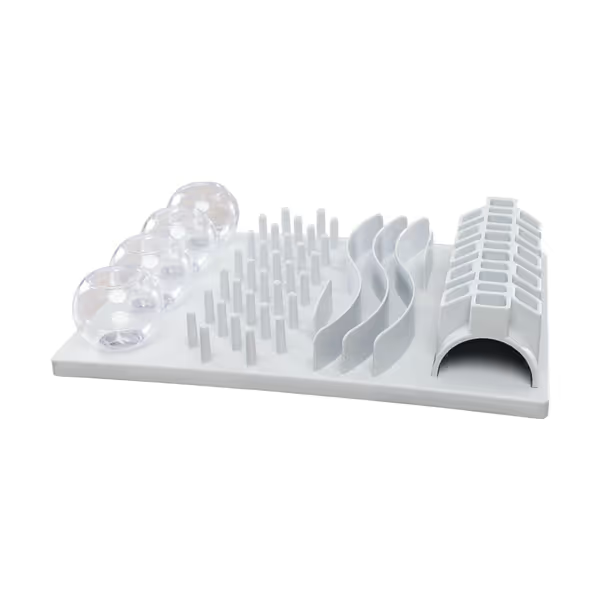
TRIXIE Fun Board Cat Strategy Game
Remember: Interactive cat toys for solo play always end with food. No food finish = restless cat. No exceptions.
3. For the Noise-Sensitive Home (Babies, Roommates, WFH Calls)
Pain Point: Toy motors or crinkle balls disrupt peace; you avoid play for fear of chaos. Why It Happens: Most electronic toys prioritize motion over mindfulness, creating sensory overload. Calm homes need silent engagement. Your Two-Minute Win: Swap noisy lasers (which frustrate cats by never letting them "catch" prey!) for tactile self-play options. Crinkle is out; opt for muffled textures like felt or rubber.
The Catstages Dental Chew Wheel is my secret weapon. Infused with catnip oil, it rolls silently on carpet when nudged, mimicking a rodent's dig. Cats kick, bite, and bat it without screeching (perfect for apartment living). Size it for small spaces (it's palm-sized!), and place it near your desk for quick reset breaks during calls. Supervise chewers (remove if pieces chip), but its rubber spokes safely clean teeth while satisfying oral fixation.
4. For Multi-Cat Tension ("Who Gets the Toy?")
Pain Point: Resource guarding, redirected aggression, or one cat dominating play. Why It Happens: Single-toy sessions create competition. Cats need parallel play (similar activities far enough apart to avoid eye contact). Your Two-Minute Win: Deploy identical toy types in separate zones. Two wand teasers? Have two humans (or one human with two hands!) moving prey simultaneously in different rooms.
5. For the Space-Starved Guardian (Studio Apartments, Tiny Homes)
Pain Point: Nowhere to store bulky tracks; toys trip you in narrow hallways. Why It Happens: Most "interactive" toys assume sprawling floors. Urban cats thrive on vertical or modular play. Your Two-Minute Win: Choose collapsible or dual-purpose toys. A feather wand doubles as a drawer-store staple; a puzzle board becomes a side-table charger.
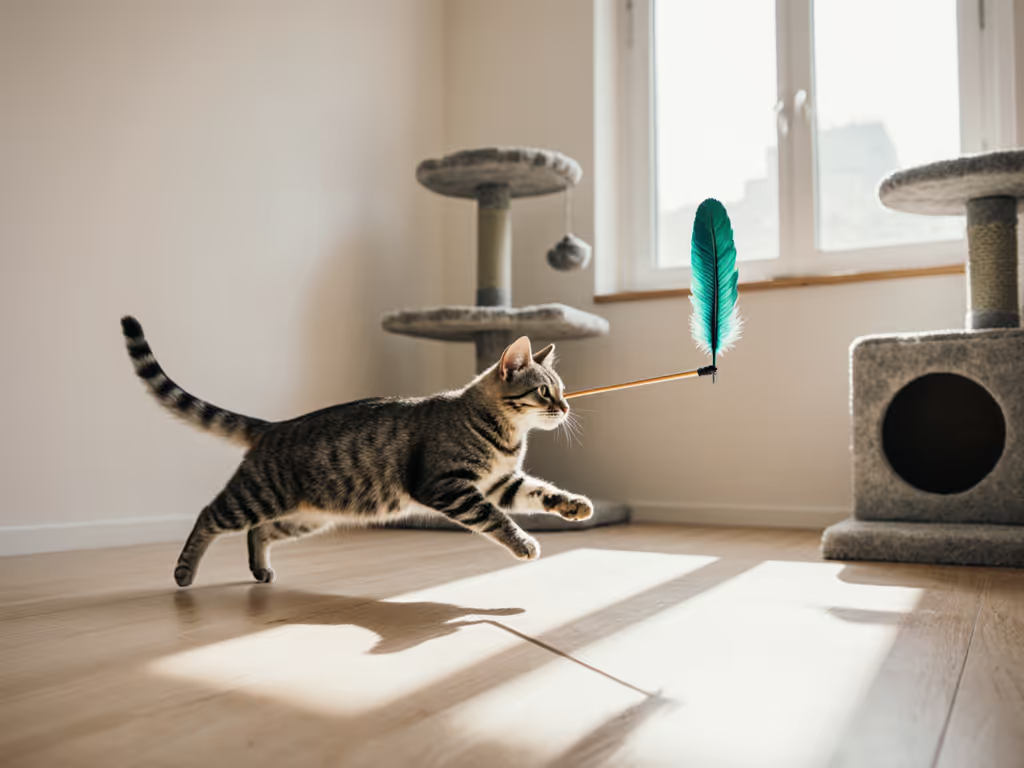
Your Action Plan: Start Tonight
- Identify Prey Preference (2 minutes): Quietly observe your cat for one hunt cycle. Does she stalk shadows (bird)? Dig at carpets (rodent)? Chase dust motes (insect)? Note it on your phone.
- Match One Toy: Pick just one toy type from this guide matching her preference (e.g., timid cat + bird profile = Da Bird).
- Commit to Five Minutes: Set a daily timer. Wave wand slowly 12 inches off ground. End with kibble. Repeat.
Consistency beats complexity. My once-hidden cat now bumps my hand for play at 7 AM (not because I bought the "best" toys, but because we built trust in tiny, predictable steps). Your turn: Tonight, place one toy where your cat already rests (not where you want play to happen). Observe. Adjust tomorrow. That's how quiet confidence grows, one two-minute win at a time.
Your next step isn't buying more; it's starting smaller. Prey-before-petting isn't just a phrase; it's the key to a calm, engaged cat. Try it for five days. I'll wait right here when you're ready to level up.

